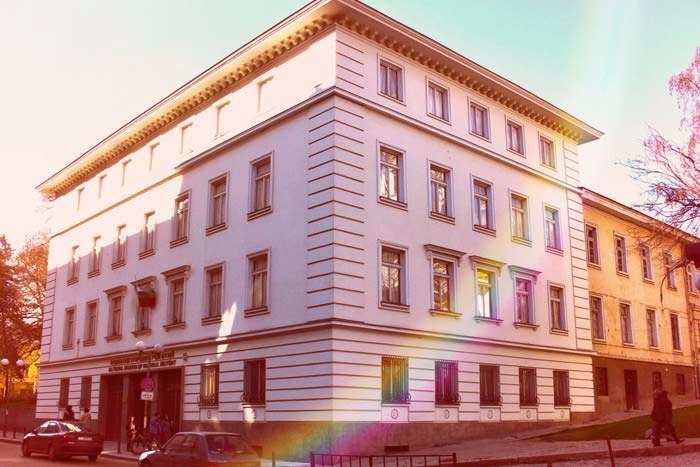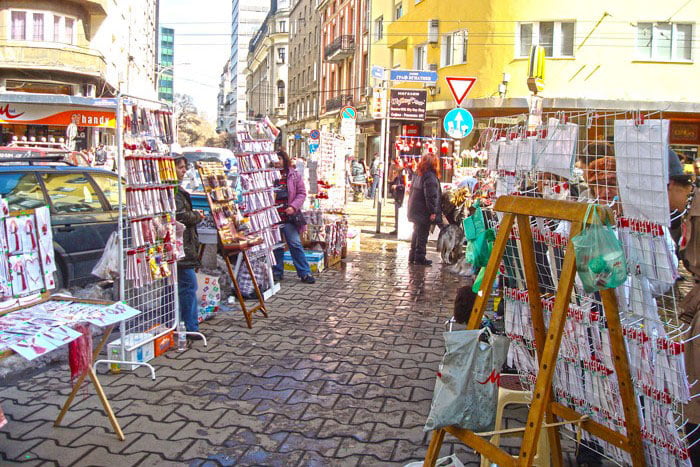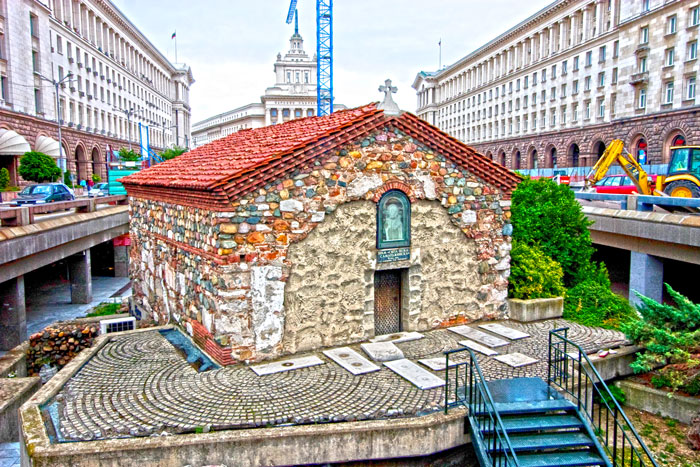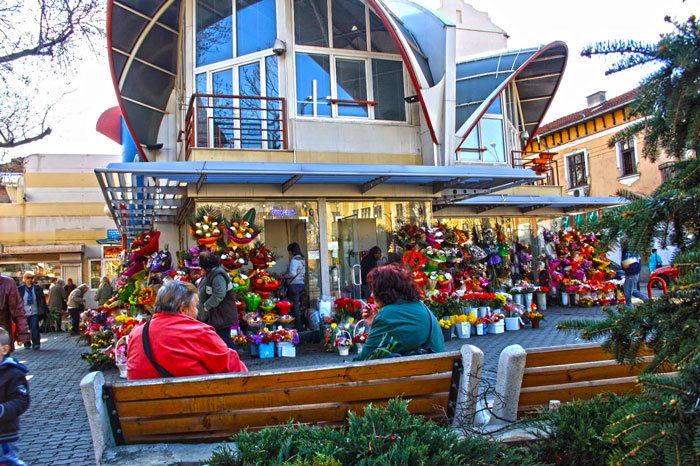Private guided Sofia tours hide a small church
The small ‘St. George’ Rotunda Church is the hidden treasure in private guided Sofia tours. It is hiding among encircling buildings like a hotel and the Presidential building.
The temple is one of the oldest architectural monuments in Sofia. Although it is small in size, it’s interesting to be seen inside. The Rotunda is the only building that is in good condition. That charming little church dates back to the 4th century. It is as far back as the Roman Empire, from Emperor Constantine the Great’s time. The construction of the temple coincided with a period in the history of Serdika when the city was flourishing. It was one of the largest and most considerable Roman cities on the Balkan Peninsula as well. The Emperor Constantine the Great is known to have said the phrase: ‘Serdika – my Rome’.
There is a supposition that the church was a building of a cult, probably a martyrion. The martyrion is a religious bulding devoted to a martyr. This supposition has been provoked by the existence of a hypocaust. The hypocaust is a system of central heating in a building that produces and circulates hot air below the floor of a room. It was something needed for the Roman Baths but it had to be a certain height. The hypocaust found in the Rotunda is higher and that leaded to speculations about the purpose of the small church. Whatever the truth is, it’s a fact that ‘St. George’ Rotunda Church is a tiny jewel that brings only good emotions when visited. Private guided Sofia tours can easily prove this by simply taking you there.
Rare survivor of Bysantine Sofia
The capital of Bulgaria, known at the time as Serdika, prides itself on having the Rotunda that had survived all these centuries. The vault of the church had been destroyed twice, due to an earthquake and of the Huns in the 5th c. when the architectural ensemble was heavily impaired.
To start with, the rotunda used to be a baptistry when constructed in the 4th century. Not until the 6th century, was it transformed into a church. Vladislav Gramatik mentions the rotunda as an operative temple in his story about the relocation of the relics of St. Ioan Rilski from Turnovo to the Rila Monastery in the summer of 1469. Then, during the rule of Sultan Salim I (1512-1520) the Rotunda was transformed into a mosque, called Gyul-djamasy. The wall-paintings were erased by white plaster and floral motives were painted on the walls.
After the liberation of Bulgaria from the Ottoman rule, in the XIX century, the Rotunda was abandoned. Fortunately, in 1915 it was cleaned out of everything it was provided with during its transformation into a mosque – the minaret was destroyed, the interior plaster was cleaned and the medieval paintings, comprising three layers, were uncovered.
Today ‘St. George’ Rotunda is an active church and it helds Orthodox lithurgies everyday.





